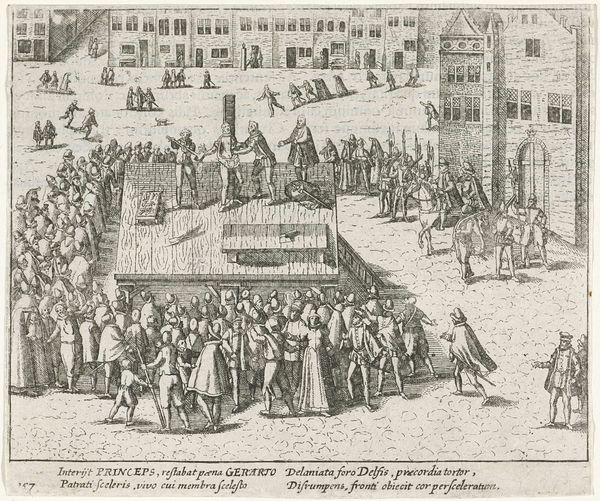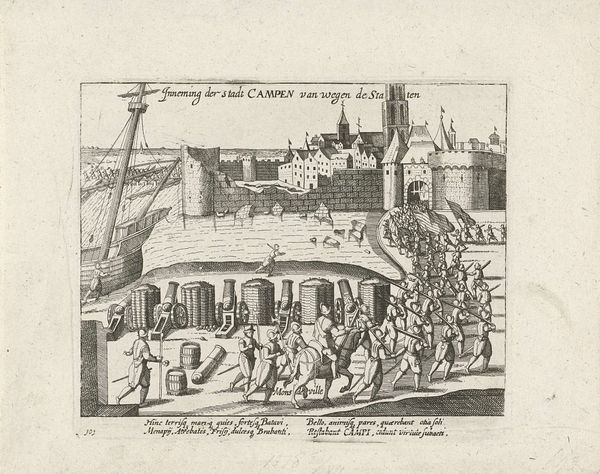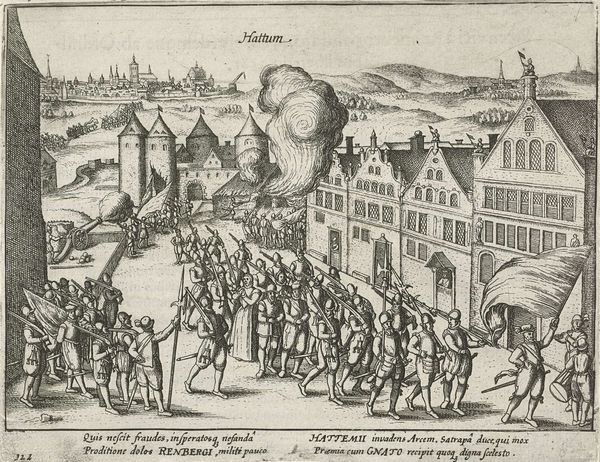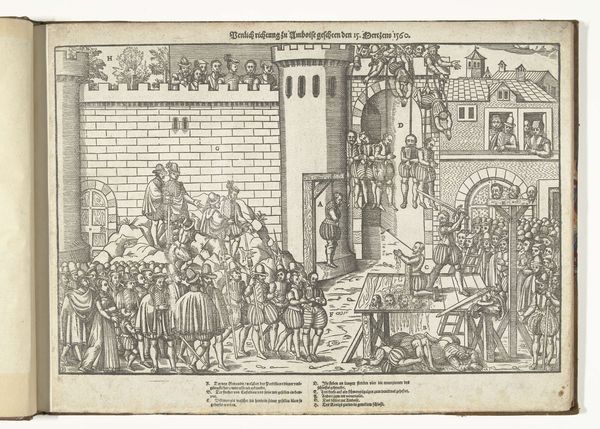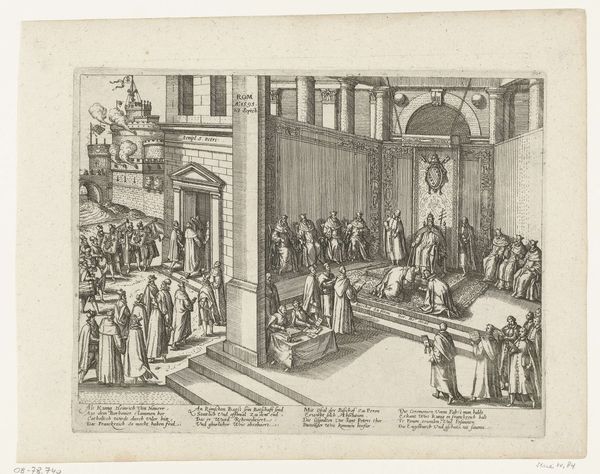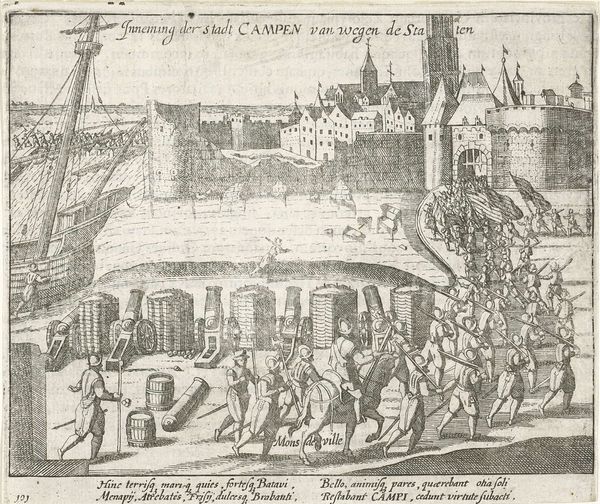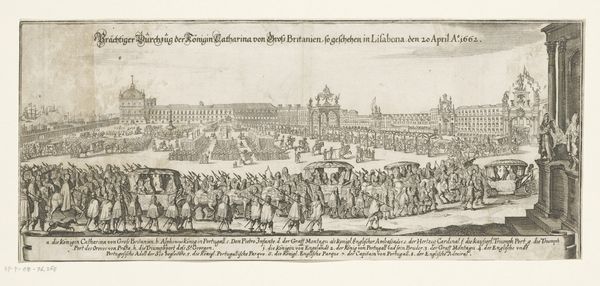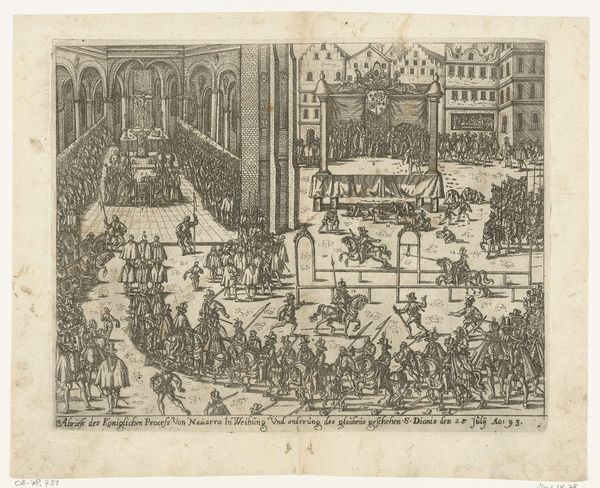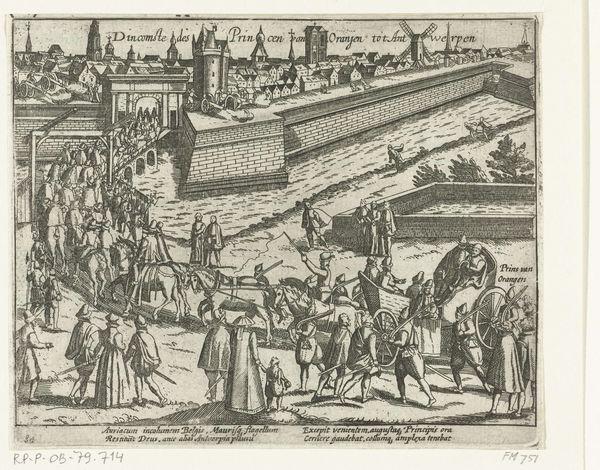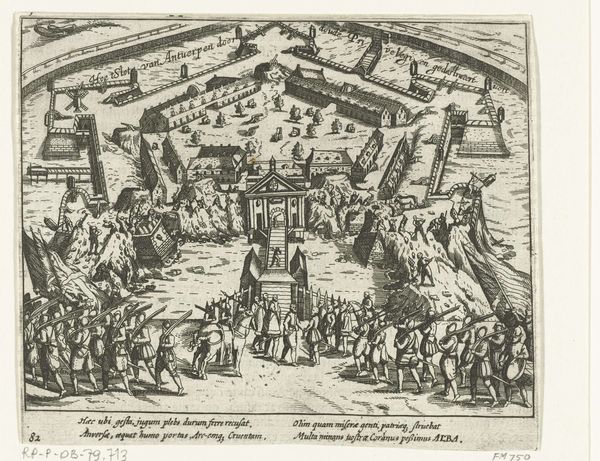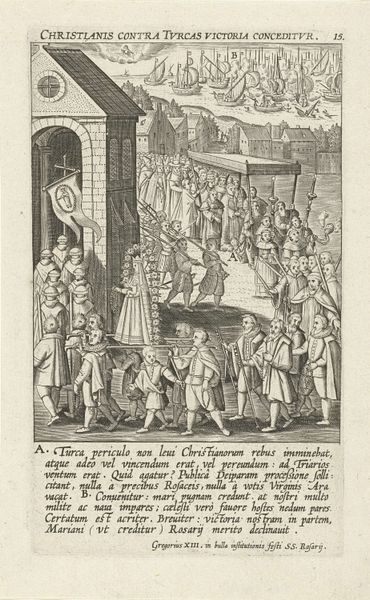
print, engraving
# print
#
old engraving style
#
figuration
#
line
#
cityscape
#
history-painting
#
northern-renaissance
#
engraving
Dimensions: height 184 mm, width 260 mm
Copyright: Rijks Museum: Open Domain
Editor: This is “Begrafenisstoet op de binnenplaats van de burg te Düsseldorf,” or “Funeral Procession in the Courtyard of the Castle at Düsseldorf,” an engraving made in 1592 by Frans Hogenberg, housed in the Rijksmuseum. It depicts a very formal, organized procession. What do you see in this piece? Curator: I’m drawn to the means of production, the very act of engraving. Consider the labor involved in creating such a detailed image with such a demanding technique. The linear style, characteristic of Northern Renaissance prints, wasn’t just an aesthetic choice; it was intrinsically linked to the available materials and the social function of prints in disseminating information. Editor: That makes sense. So you're less focused on the "history painting" aspect and more on how the print itself was made and distributed? Curator: Precisely! How would this image circulate? Who would have access to it, and at what cost? The materiality of the print itself, the paper, the ink, its replicability—all speak to its social purpose and its role in documenting and even shaping historical narratives. Think about the socio-economic conditions surrounding the artist, the engraver, and the publishers involved. Were they commissioned? Who paid for their labor, and how did that influence the final product? Editor: That's a really interesting way to look at it. I was initially focused on identifying the figures and understanding the context of the funeral itself. Curator: And there's nothing wrong with that, but a materialist approach asks us to go beyond the representational and delve into the very fabric of the artwork. We should analyze the relationship between the materials used, the labor involved, and the social context in which it was created and consumed. Editor: Okay, I see now. It's like looking at the print as not just an image, but as a historical artifact that carries information about its own making and the society it came from. Curator: Exactly. Understanding the means of production gives us insight into the economic, social, and even political realities of the time.
Comments
No comments
Be the first to comment and join the conversation on the ultimate creative platform.
